Showing Spotlights 993 - 1000 of 2877 in category All (newest first):
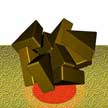 The optical manipulation of plasmonic nanoparticles has advantages for applications such as nanofabrication, drug delivery and biosensing. To that end, researchers have been developing techniques for the reversible assembly of plasmonic nanoparticles that can be used to modulate their structural, electrical and optical properties. The latest such technique is a low-power assembly that is enabled by thermophoretic migration of nanoparticles due to the plasmon-enhanced photothermal effect and the associated enhanced local electric field over a plasmonic substrate.
The optical manipulation of plasmonic nanoparticles has advantages for applications such as nanofabrication, drug delivery and biosensing. To that end, researchers have been developing techniques for the reversible assembly of plasmonic nanoparticles that can be used to modulate their structural, electrical and optical properties. The latest such technique is a low-power assembly that is enabled by thermophoretic migration of nanoparticles due to the plasmon-enhanced photothermal effect and the associated enhanced local electric field over a plasmonic substrate.
Sep 21st, 2016
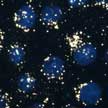 Currently available toxicity screening methods are not fully compatible with nanotoxicity studies. Due to the unique physicochemical characteristics of nanomaterials, conventional cytotoxicity assays have been shown to create complications in nanotoxicity evaluation. In a new study, researchers used surface-enhanced Raman scattering (SERS) to evaluate the cytotoxicity of nanomaterials. They show that SERS can be used as an alternative nanotoxicity evaluation method especially for the nanomaterials that have been shown to create complications in conventional cytotoxicity assays.
Currently available toxicity screening methods are not fully compatible with nanotoxicity studies. Due to the unique physicochemical characteristics of nanomaterials, conventional cytotoxicity assays have been shown to create complications in nanotoxicity evaluation. In a new study, researchers used surface-enhanced Raman scattering (SERS) to evaluate the cytotoxicity of nanomaterials. They show that SERS can be used as an alternative nanotoxicity evaluation method especially for the nanomaterials that have been shown to create complications in conventional cytotoxicity assays.
Sep 20th, 2016
 Jellyfish can change from a transparent state to an opaque state when disturbed. Tactile stimulation can instantaneously evoke the contraction of radial muscles in the margin of a nectosac, resulting in a crumpled morphology with inward folds. Due to the wrinkles/folding that form, light will be scattered instead of travelling directly through the skin, resulting in a more opaque appearance. Inspired by marine life, a variety of these mechanochromic devices are created by researchers. These devices are able to undergo change from transparency to opaqueness, as well as a changes in color and pattern upon simply stretching and releasing the substrate.
Jellyfish can change from a transparent state to an opaque state when disturbed. Tactile stimulation can instantaneously evoke the contraction of radial muscles in the margin of a nectosac, resulting in a crumpled morphology with inward folds. Due to the wrinkles/folding that form, light will be scattered instead of travelling directly through the skin, resulting in a more opaque appearance. Inspired by marine life, a variety of these mechanochromic devices are created by researchers. These devices are able to undergo change from transparency to opaqueness, as well as a changes in color and pattern upon simply stretching and releasing the substrate.
Sep 2nd, 2016
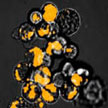 Very recently, the use of zwitterionic coatings has emerged as an alternative strategy to provide corona free nanoparticles. The layers of proteins adsorbed to the surface of a nanomaterial at any given time is known as the protein corona. This protein layer can hinder interactions between the targeting ligands at the surface of nanoparticles and their binding partners on the cells' surface. Researchers found that by using both zwitterionic- and targeting-ligands at the surface of nanoparticles, the shielding effects of protein corona can be reduced.
Very recently, the use of zwitterionic coatings has emerged as an alternative strategy to provide corona free nanoparticles. The layers of proteins adsorbed to the surface of a nanomaterial at any given time is known as the protein corona. This protein layer can hinder interactions between the targeting ligands at the surface of nanoparticles and their binding partners on the cells' surface. Researchers found that by using both zwitterionic- and targeting-ligands at the surface of nanoparticles, the shielding effects of protein corona can be reduced.
Sep 1st, 2016
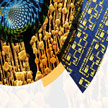 Written by Nanowerk's Michael Berger, this just published book is a collection of essays about researchers involved in all facets of nanotechnologies. Nanoscience and nanotechnology research are truly multidisciplinary and international efforts, covering a wide range of scientific disciplines such as medicine, materials sciences, chemistry, biology and biotechnology, physics and electronics. Each of the book's chapters is based on a scientific paper that has been published in a peer-reviewed journal. Although each story revolves around one or two scientists who were interviewed for this book, many, if not most, of the scientific accomplishments covered here are the result of collaborative efforts by several scientists and research groups, often from different organizations and from different countries.
Written by Nanowerk's Michael Berger, this just published book is a collection of essays about researchers involved in all facets of nanotechnologies. Nanoscience and nanotechnology research are truly multidisciplinary and international efforts, covering a wide range of scientific disciplines such as medicine, materials sciences, chemistry, biology and biotechnology, physics and electronics. Each of the book's chapters is based on a scientific paper that has been published in a peer-reviewed journal. Although each story revolves around one or two scientists who were interviewed for this book, many, if not most, of the scientific accomplishments covered here are the result of collaborative efforts by several scientists and research groups, often from different organizations and from different countries.
Aug 31st, 2016
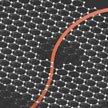 Traditionally, the size of electrode materials in supercapacitors is reduced to nanometers to enable high surface area and more room for storing more amounts of energy. But the microscopic electron distribution in nanocarbons limits the total amount of stored energy through a property called 'quantum capacitance'.
Although a lot of charge could be stored in the pores on nanocarbons due to their high surface area, their inherently low quantum capacitance reduces the net energy that could be drawn from supercapacitors. Researchers have controllably added nitrogen atoms to graphene to achieve carbon supercapacitors ready for practical applications.
Traditionally, the size of electrode materials in supercapacitors is reduced to nanometers to enable high surface area and more room for storing more amounts of energy. But the microscopic electron distribution in nanocarbons limits the total amount of stored energy through a property called 'quantum capacitance'.
Although a lot of charge could be stored in the pores on nanocarbons due to their high surface area, their inherently low quantum capacitance reduces the net energy that could be drawn from supercapacitors. Researchers have controllably added nitrogen atoms to graphene to achieve carbon supercapacitors ready for practical applications.
Aug 25th, 2016
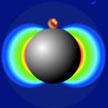 Localization of photons to nanoscale volumes with the aid of plasmonic nanoantennas opened new horizons in bio(chemical) sensing and nanoscale imaging. However, plasmon resonances are short-lived, and the photon energy quickly dissipates as heat, creating temperature gradients on plasmonic chips. In new work, researchers have proposed design rules to engineer hybrid optical-thermal antennas that offer multiple functionalities in nanoscale light and heat management.
Localization of photons to nanoscale volumes with the aid of plasmonic nanoantennas opened new horizons in bio(chemical) sensing and nanoscale imaging. However, plasmon resonances are short-lived, and the photon energy quickly dissipates as heat, creating temperature gradients on plasmonic chips. In new work, researchers have proposed design rules to engineer hybrid optical-thermal antennas that offer multiple functionalities in nanoscale light and heat management.
Aug 24th, 2016
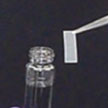 The fact that temperature differentials (heat) are ubiquitously present in our environment makes thermoelectric energy harvesting a highly attractive research field. New work highlights the fabrication of flexible thermoelectric materials and modules by merging colloidal nanomaterials (quantum dots) that can be tuned for efficient heat-to-electricity energy conversion with naturally abundant cellulose paper that are low in cost and have inherently low thermal conductivity.
The fact that temperature differentials (heat) are ubiquitously present in our environment makes thermoelectric energy harvesting a highly attractive research field. New work highlights the fabrication of flexible thermoelectric materials and modules by merging colloidal nanomaterials (quantum dots) that can be tuned for efficient heat-to-electricity energy conversion with naturally abundant cellulose paper that are low in cost and have inherently low thermal conductivity.
Aug 23rd, 2016
 The optical manipulation of plasmonic nanoparticles has advantages for applications such as nanofabrication, drug delivery and biosensing. To that end, researchers have been developing techniques for the reversible assembly of plasmonic nanoparticles that can be used to modulate their structural, electrical and optical properties. The latest such technique is a low-power assembly that is enabled by thermophoretic migration of nanoparticles due to the plasmon-enhanced photothermal effect and the associated enhanced local electric field over a plasmonic substrate.
The optical manipulation of plasmonic nanoparticles has advantages for applications such as nanofabrication, drug delivery and biosensing. To that end, researchers have been developing techniques for the reversible assembly of plasmonic nanoparticles that can be used to modulate their structural, electrical and optical properties. The latest such technique is a low-power assembly that is enabled by thermophoretic migration of nanoparticles due to the plasmon-enhanced photothermal effect and the associated enhanced local electric field over a plasmonic substrate.
 Subscribe to our Nanotechnology Spotlight feed
Subscribe to our Nanotechnology Spotlight feed





